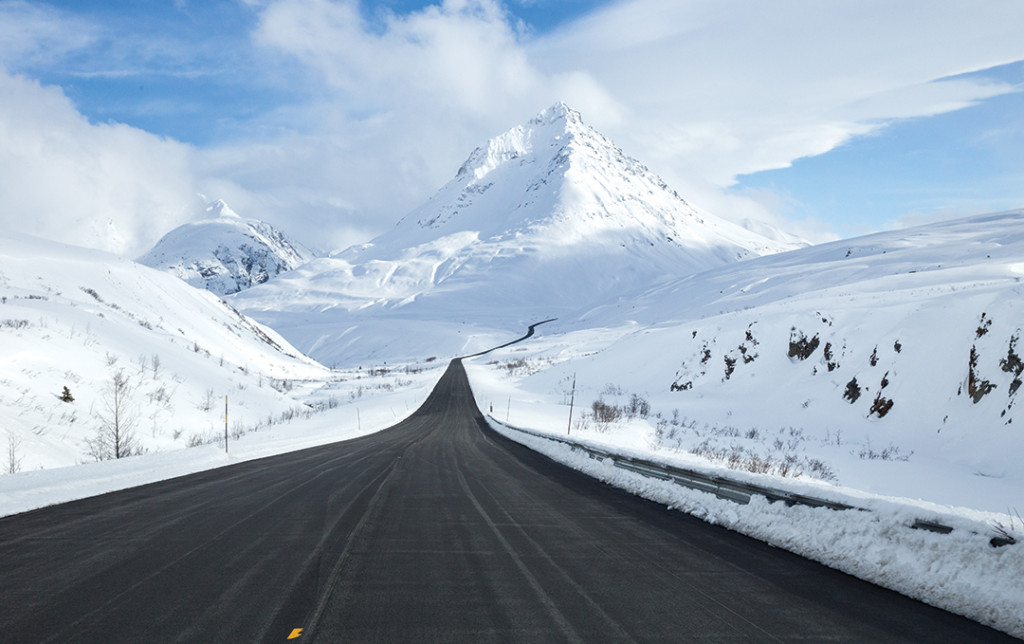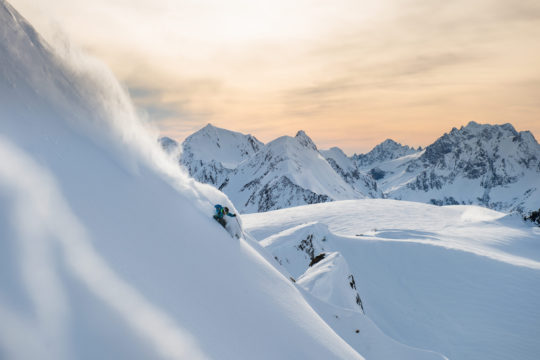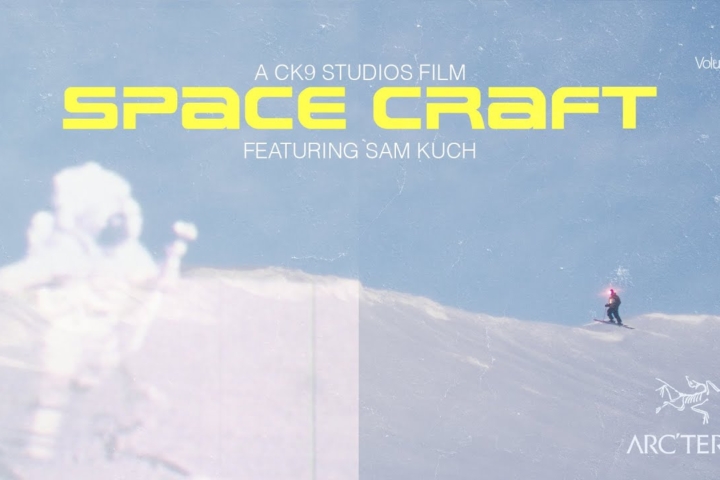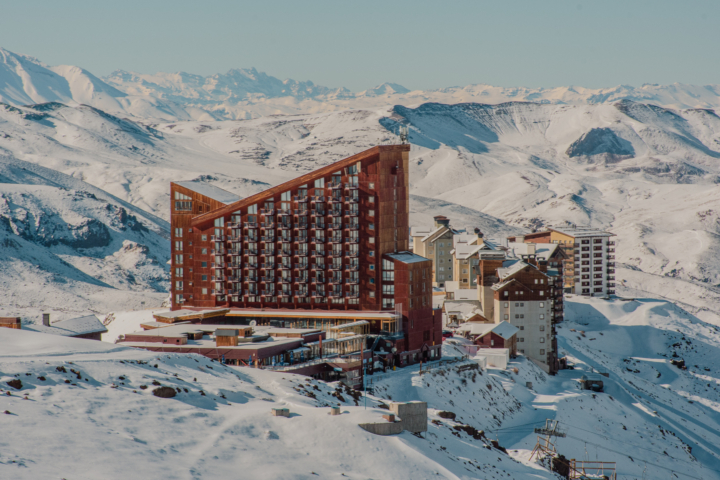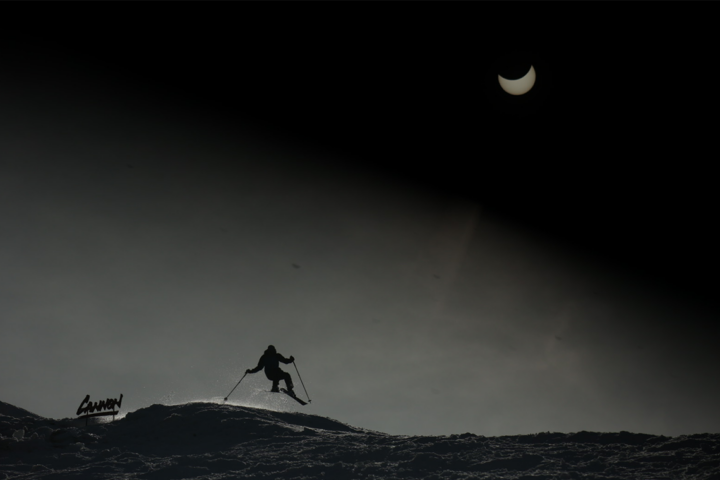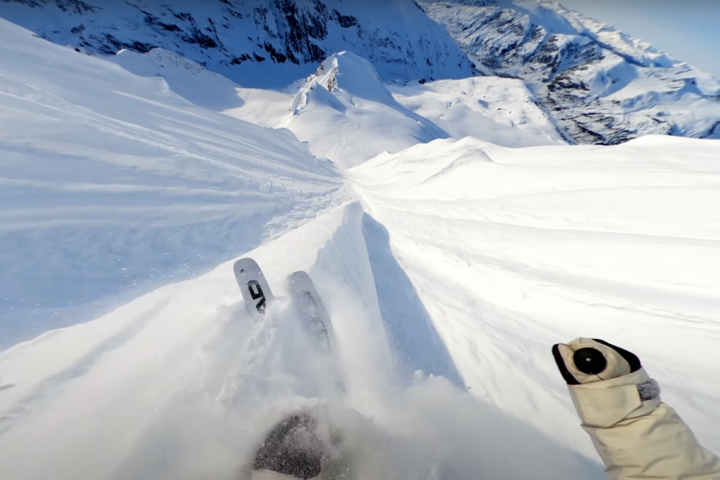[juicebox gallery_id=”332″]
Haines, Alaska. The quintessential bucket list destination for die-hard skiers. Benefitting from a unique set of geographic and meteorological circumstances, the zone is an extreme skiing paradise. Take the Aleutian Low, for example: A semipermanent low pressure center situated upwind of Haines. Moisture that originates near the Aleutian Islands travels inland and collides with a wall in the form of some of the highest coastal mountains in the world, providing consistent, heavy winter snowfall. A combination of maritime and arctic influences yield some of the lightest, driest snow you’ll ever encounter. Then consider that you can shred from nearly 6,000 feet to sea level, and you should understand why Haines is the stuff of legend.
Here, professional skier Riley Leboe and FREESKIER senior photographer, Jeff Cricco, shed light on skiing in Haines. From sledding to touring to heli-access adventures, the duo walk you through what to expect, both positive and negative. By the time you’re through, you should be prepped to map out an adventure of your own. And get the hell out there already. It’ll probably be the best decision you ever make.
Haines on the Cheap(er)
words by Riley Leboe
We’ve all had the dream. Standing atop a steep, 3,000-foot spine line blanketed by bottomless powder, with clear skies above. All that lies below you is a blank canvas and a helicopter chariot awaiting your arrival. Alaskan heli-skiing could very well be the pinnacle of what we call “freeride.” For many, it’s a once in a lifetime experience. For a fortunate few, it becomes a regular addiction needing to be fed. But the experience comes at a cost. Helicopters and their associated price tags are inherently expensive, and so too is getting to Alaska—something I’ve discovered first hand. Ever since my first Alaskan venture in 2010, I’ve spent countless hours researching and planning ways to get back to AK on an everyman’s budget. In mid-March of 2015, a group consisting of myself, Kye Petersen, Mike Henitiuk and photographer Bryn Hughes set out to make that economical dream a reality.
Planning
We knew pulling off an Alaskan mission on the cheap and dirty would be a big undertaking. Our first step was to determine the best location for terrain that can be accessed without a heli, and we were quick to choose Haines. Several of our gang had skied there before, and we knew the area had options for both sled and ski-touring access. Additionally, a vast amount of terrain is accessible from the Haines Highway. Google Earth was our best friend as we mapped routes that ensured the best chances for us to reach our desired zones.
Getting There
There are several ways to get to Haines. By air, you can fly into Juneau, Alaska, or Whitehorse, Yukon, Canada. From Juneau, you can snag a Rent-A-Wreck rental vehicle (read: cheap ass van), pack it full of all necessary gear and catch a beautiful five-hour ferry ride up the Lynn Canal to Haines. In Whitehorse, you’ll find several options for rental cars and RVs. In the wintertime, RV rental rates are heavily discounted which makes for a solid economical choice. Haines lies just five hours to the south of Whitehorse by car—you should strongly consider one with four-wheel drive. Regardless of the route you take, I recommend stocking up on groceries in Juneau or Whitehorse as options are limited in Haines.
If you don’t opt to fly, driving to Haines is still fairly straightforward. If you live south of the Yukon Territory, drive north until you hit the Alaska Highway and hang a left. That will bring you through Whitehorse and from there, southwest to Haines. It’s a long drive from damn near anywhere. There are some good options for skiing, sledding and touring along the way. Depending on where you’re coming from, you will drive through the Rockies on the British Columbia-Alberta border or through the BC Interior. Either way, you’ll have skiing options in the Rockies or along the Interior in Smithers, Terrace and Stewart (See p. 56 for more). Curate a 36-hour-long playlist and enjoy the mission.
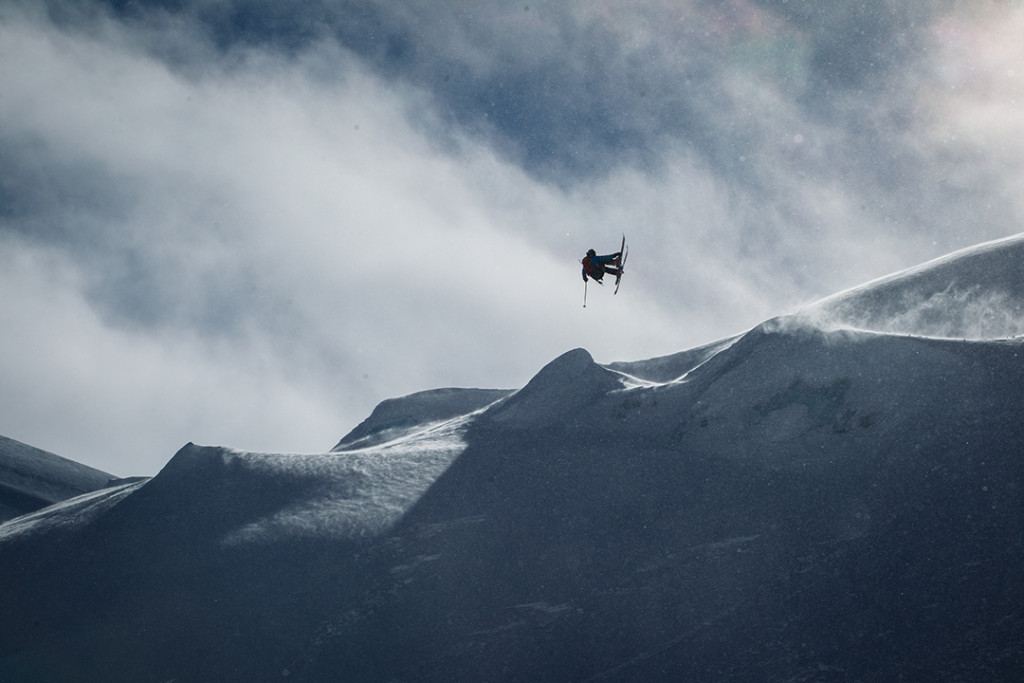
Pro tip: Travel during the day and bring a bunch of loaded jerry cans. We learned the hard way that fuel stations are few and far between. On our drive from Stewart to Whitehorse, we departed late in the day. As darkness fell, our stress levels rose. Each fuel station we passed was lightless and locked. Hughes and I emptied four or five jerry cans worth of fuel into my truck. Petersen and Heni did the same. Ultimately, as the last of the 92 octane— originally intended for our sleds—was dumped into our pickups, it was evident that we didn’t have enough juice to make it to Whitehorse; we’d be sleeping in the trucks on the side of the highway, or so we figured.
With empty lights glowing red, we pulled into yet another empty gas station in the town of Teslin, 150 kilometers east of Whitehorse, to spend the night. In a twist of fate, we noticed light shining through a window above the service station. In a last-ditch effort we knocked on the door, and the owner of the station eventually appeared. After hearing our story, he was kind enough to turn on the pumps, let us fill up and buy some food from the convenience store. We made it to Whitehorse by dumb luck. Our return home along that same stretch of road was planned much more accordingly. Bottom line: Expect a long stretch of highway in wild country. You need to come prepared and be self-sufficient. There’s no cell service, AAA or CAA, or tow truck driver to change your tire or wipe your ass. If you’re looking to be pampered, go to Vail.
Safety
Alaska is home to demanding terrain. Although the mountains can fulfill your wildest skiing desires, the level of risk should be taken seriously. Weather is unpredictable. Precipitation, temperature, wind and other factors are constantly influencing the snowpack. It’s critical that all members of the group are comfortable, effective and efficient in backcountry travel, snow safety and first aid. All skiing access around Haines requires glacier travel, so an understanding of safe glacial navigation and crevasse rescue is a necessity. A crevasse rescue kit is a multi-use tool; not only will it pull you or a party member out of a giant hole, it’ll come in handy if a sled ever gets stuck in a chasm. Using the mechanical advantage of pulleys may be the only way that a small group can pull 600 pounds of machine out of a rut.
Self-sustained missions also require consideration of injury and rescue in the event of an emergency. While operating in the most remote locations, you must have rescue plans in place in case a member of your group is injured or lost. A satellite phone—starting at about $500—is your best bet for acquiring speedy assistance via Alaska Search and Rescue, Yukon Search and Rescue and the heli operations nearby. More often than not, helicopter rescue is the only option up there.
Read the current avalanche bulletins and also the reports from previous weeks. The Haines Avalanche Information Center (alasakasnow.org) is a great resource that catalogs all avalanche bulletins in a calendar format. This enables you to see a snowpack trend over time that you can compare with your snow-stability tests. And it’s never a bad idea to garner local knowledge by going for a pint at the Fog Cutter or Harbor Bar. Odds are you will bump into a heli guide or like-minded individuals who may provide additional information from the field. Reaching out to the heli ops can be extremely helpful, too. Even if you’ve done all your homework, hiring a guide is still the best option. Having a guide who is experienced in the mountains—particularly those surrounding Haines—is invaluable. Split the cost of a guide between your group. Critical knowledge and increased safety is always worth the extra dime.
The Fun Part: Sled Access
To maximize our time in the mountains we wanted to make “home” an RV stationed at the trailhead. Hughes hopped out of my truck and took his rightful seat as captain in the 32 foot motorhome. We loaded our six-wheeled abode—which we affectionately named Dana CaRV—and made the five-hour drive southwest from Whitehorse to Haines. Stellar weather conditions allowed us to get a good sense of our surroundings. It was mid-March, and Alaska was one of the only places on the globe, at the time, receiving hefty amounts of snowfall. As we arrived, another storm was steadily approaching, so many folks in town were in celebration mode. We kept it cool, in anticipation of scoping our access zones the next day. Cold and clear nights had produced a hefty layer of feathery surface hoar that would prove to be an issue. With new snow in the forecast, which would inevitably cover the hoar layer, we knew we’d be forced to tiptoe around until the snowpack settled.
The next morning we made our way to the trailhead north of mile marker 33. You’ll quickly learn that trailheads and heliports in the area are indicated by the closest mile marker, measured from Haines. We unloaded the sleds and assessed the shallow-water crossing of the Chilkat River, separating us from the Promised Land. After a quick creek fording, we arrived at the foot of Jarvis Glacier. The storm had set in, and the snow was starting to fall quite heavily. We made our way onto the glacier slowly. Getting a glimpse of the drainages we’d planned to ski, we decided to call it a day and wait for better weather.
We dropped extra fuel in anticipation of long days ahead, marked them with a probe and turned tail back to camp. Over the course of the week-long storm, we kept in touch with guides and other groups that were able to make it out into the mountains by heli during clear-weather windows.
Finally, the storm halted. With the sharp sounds of our two-stroke engines ringing in our ears, we came to a stop on the glacier at the foot of our first destination. We gazed upon the east-facing lines glistening in the rich morning sunlight. After some snow assessment, we planned our ascent. The massive terrain demanded all of our collective experience. We used a combination of—in order—sledding, ski touring and bootpacking up the shoulder to gain the ridge and peak. As we transitioned from the south-facing climb in thin, sunbaked snow, we found ourselves standing in waist-deep pow on the ridge. The onset of adrenaline was instantaneous.
Petersen, Heni and I skied three blower laps that morning. With beards caked in Alaskan cold smoke, the smiles on our faces were impossible to pry off. Adrenaline still coursing, our attention quickly shifted to our next objective as we looked at 360 degrees of possibilities from our location in the basin of the alpine bowl. We spent the day exploring and skiing lines on the multitude of peaks, all relatively close to the trailhead. Enjoying the long spring days, we picked our lines starting on east-facing slopes in the morning and moved slowly towards the late sun-lit, west-facing slopes. We skied deep into the afternoon.
The next two days were spent in the front bowls of the Jarvis. It gave us time to get our bearings in the area and warm up our big-line legs. We skied amazing sled-access spines and vertical to rival a heli day. The terrain was featured to whatever your liking— spines, cliffs, pillows, poppers and the odd natural lip takeoff. The reason we drove 36 hours was realized.
Although we were enjoying some of the best skiing we’d experienced all season, we had come to Haines with specific peaks in our crosshairs. Our sights were set on bigger objectives: The crown jewels were several peaks in what is commonly referred to as the Back Nine, denoting the crests on the west side of the Tsirku River and Glacier. This is where all the fuel (16 jerry cans) we had stored on day one would come in handy. Though we had originally planned to camp out for two nights, our weather window was only going to provide time for a day mission.
Getting onto the Tsirku Glacier required some of the most technical sledding I’ve encountered. Access to the glacier included navigating a labyrinth of crevasses and descending blind rolls we had only seen from above via topographical maps and Google Earth. After a hard morning of trail breaking through what I can only describe as uncharted and awe-inspiring terrain, our group of experienced snow machinists arrived in the amphitheater below a peak dubbed Corrugated. The feeling of total isolation and insignificance among such massive mountains was overwhelming. Staring straight up at a 3,000-foot- plus spine wall tends to instill a newfound sense of perspective. We were amazed to find the snowpack nearly twice as fat as what we’d encountered closer to camp. Staring up at the gem, our group had some decisions to make. While doing our snow assessments, we talked logistics and strategies on how to approach and ski the face. All of our scouting, resourcefulness and effort was about to pay off.
Yet, daylight was passing us by. As with many sledding outings, trail breaking took more time than anticipated. This put us in a time crunch. The significant increase in new snow, the size and scale of runs and the time frame we had to ski them were raising red flags. After lengthy discussions, we chose to pull back from Corrugated, deciding that we simply didn’t have enough time or snowpack information to climb and ski it safely. I was staring up at what would definitely have been the line of my life, but this was high-consequence terrain and our group was determined to finish the trip safely.
As we traveled back towards camp, we got our fix skiing some amazing, big lines. Although they weren’t lines descending from Corrugated, I chalk the day and trip up as an absolute success. These mountains aren’t something you dive into headfirst. We got our feet wet and our bearings in the area. We skied some amazing faces, saw the most incredible terrain of our lives and made some good decisions given the snowpack and risk factors. There is a lifetime of learning and riding around Haines, and we knew we’d be back to continue exploring those mountains.
As we arrived back at camp, a van pulled up beside us. A ski-touring group from Utah had made the trek north and had the better part of a month ahead of them. We enjoyed a few beers and passed on all the information we had gained over the past two weeks.
Ski Touring
A ski-touring trip around Haines is a cost effective and viable way to access the mountains, assuming you have big lungs and strong legs. Crossing the Chilkat River and navigating the valley bottoms can make for a long approach to the glaciers and ski terrain, but once in the alpine, ski laps are quick. On our trip, we met quite a few groups north of mile 33 camped out in vans and tents accessing amazing terrain via touring. The Chilkat Pass on the Canadian side of the border—north of Haines—is your best bet for quick access. Short tours right from the road give access to big terrain including peaks such as The Three Guardsmen. Depending on the time of year, some of the pullouts over the pass turn into tent and RV villages inhabited by groups of skiers on their own missions. Imagine a small Burning Man for hardcore rippers.
Additional adventurous, lengthy missions can be initiated from various pullouts along the Alaska Highway. Generally, access is best from mile 25 to mile 39. Depending on the snow base, you may have to find bridges to cross the Chilkat in certain places. Scouring Google Earth for logging roads that get close to the alpine and accessible drainages can be helpful in minimizing approach times.
A great option on a tight time frame is to get a drop with a heli from either SEABA or Alaska Heliskiing (See p. 103). Fill the bird with your group and get dropped in a midsized bowl. Spend the day lapping said bowl. Depending on your location, there are options to ski out to the valley bottom, saving the cost of the flight out. For about $200 a head you could have the best day of your life.
Expected Travel Costs
From Vancouver to Haines, return:
Fuel: $1,240 CAD (~ $950 USD), based on a Toyota Tacoma, towing two sleds
From Whitehorse to Haines, return
RV rental, one week (sleeps five): $637 CAD (~ $488 USD)
RV fuel: $380 CAD (~ $291)
RV park in Haines: $25 USD per night with electricity, water, shower, bathroom Camping: $0.00
Groceries, one week: $125 per person
Note: Costs are based on USD/CAD value circa April, 2015
Veteran RV-Travel Tips
1. Only bring essentials into the RV. Put the rest in the RV storage bays.
2. Convert the bathroom into a drying room. A small space heater will dry out wet gear in there.
3. Shit outside. The RV is already stinky enough with five dudes.
Haines Tips
Look the part. Buy a pair of Xtratuf rubber boots. You’ll only ever see them in Alaska, and everyone has a pair. Haines has some good spots to eat. For breakfast, hit up the Mountain Market for a sunrise wrap. They’re open early and have great food and coffee. For dinner, try the Fireweed for awesome pizza. Order a large pie and keep half for lunch the next day.
Suggested Safety Equipment (Know Before You Go)
• avalanche tools, including beacon, shovel, probe
• crevasse rescue equipment
• climbing ropes, one 60-meter rope and two 30-meter half ropes
• climbing equipment, including carabiners, belay devices, snatch blocks and slings
• spot or InReach satellite messenger
• ice axe
• crampons
• first aid kit
• satellite phone
• climbing harness
• ice screws
Haines by Heli: The Harsh Realities & Heavenly Rewards
words by Jeff Cricco
Heli-skiing in Alaska: It’s on your list, I know. Making it happen, though, takes commitment on a few levels. For one: You must save up (or steal, or loan) somewhere in the range of five-grand for a week of mind-blowing skiing. With your springtime trip booked, you then spend the whole winter skiing the hardest you’ve skied, drinking a few less PBRs in an effort to stash some more dough, and, maybe, going to the gym more—because skiing those famed Alaskan spines ain’t exactly easy on the legs. Finally, you get to AK and spend most of your time in some remote dive bar watching locals arm wrestle, talk about fishing and the biggest animals they’ve shot. Did I burst your bubble? Good. It’s important to be up-front about the realities of heli-skiing in the 49th state—this, of course, includes Haines.

Heli-skiing in Haines is a tricky game. The reason the snow is so stable and sticks to such steep runs is because it snows so damn much, and when it snows, the choppers don’t fly. Heli-ski operators try their hardest to get clients up in the air, but sometimes it just doesn’t happen. This truth can be hard to stomach when you played the experience up in your head.
You sit, hope and pray that the weather will clear for that life-changing run—steep, long, perfect. At least, that’s what your favorite ski films portray. Many of those movies do indeed reference the down days; they show ski stars attempting to stay sane by fishing, drinking or blasting Roman candles into the night sky. But, as a viewer, you quickly forget about the 15 days that the pros sat around. That thought is quickly erased when you see the same individuals railing down a spined-out beauty, covered in out-of-this-world powder. But don’t be fooled. The average heli-skier isn’t afforded one full month to sit patiently, awaiting prime weather and snow conditions. Most heli packages involve a five-to-seven-day stay. And the odds can stack up against you just like the storms do.
On my first trip to Alaska, in 1996, we skied a couple of runs on the first day. Then, I shot a bird with a BB gun in a parking lot. I was told that the action brought us bad luck, because I didn’t eat the fowl after I shot it. We sat in an RV for 21 days until the weather cleared again.
So, now that I’ve totally sold you on heli-skiing, don’t despair too much. Hitting it right can be a mind-bogglingly fantastic experience, and by doing some research and weighing your options, you’re sure to find ways to make your dream become a reality.
One of the best ways to increase your chances of a successful heli outing is to figure out a way to stay in town for an extended period of time, poised to pounce once the storms break. This tactic has its own challenges, as heli outfits may very well be booked up, and won’t have space to accommodate walk-ins. A good way to know what you are getting into is to ask an operator how many groups are connected to a particular helicopter; if there are more than four groups to a ship, that’ll likely leave you sitting, wanting and waiting on the glacier between bumps.

If you don’t have three weeks to blow, another good option is to book your trip with an operation that has cat-skiing options for when the choppers don’t fly. Don’t get me wrong: If you plan on going heli-skiing, then cat-skiing can be a real let down. However, anyone will attest to the fact that cat-skiing is better than no skiing.
Another stellar option—which, again, requires a flexible schedule—is to book your trip last minute. Yes, last-minute flights can be really expensive, but so too is a week of hotels, food and booze, not to mention the five-grand for a week-long resi’ with a heli operator. Most of the time, you’re going to get in two or three full days if you’re lucky. At plus or minus $1,200 a day, you’ll still drop comparable dollars if you fly last minute, ski two days and only stay three nights. It all ends up being the same cost and you won’t be sitting around and dwelling on shattered dreams. Give yourself a window of time and check the weather daily from the comfort of your own couch. In the spring, you can usually bet that a lengthy high-pressure system will set up, allowing for at least a couple of days of flying weather that you can swoop in and cherry pick.

